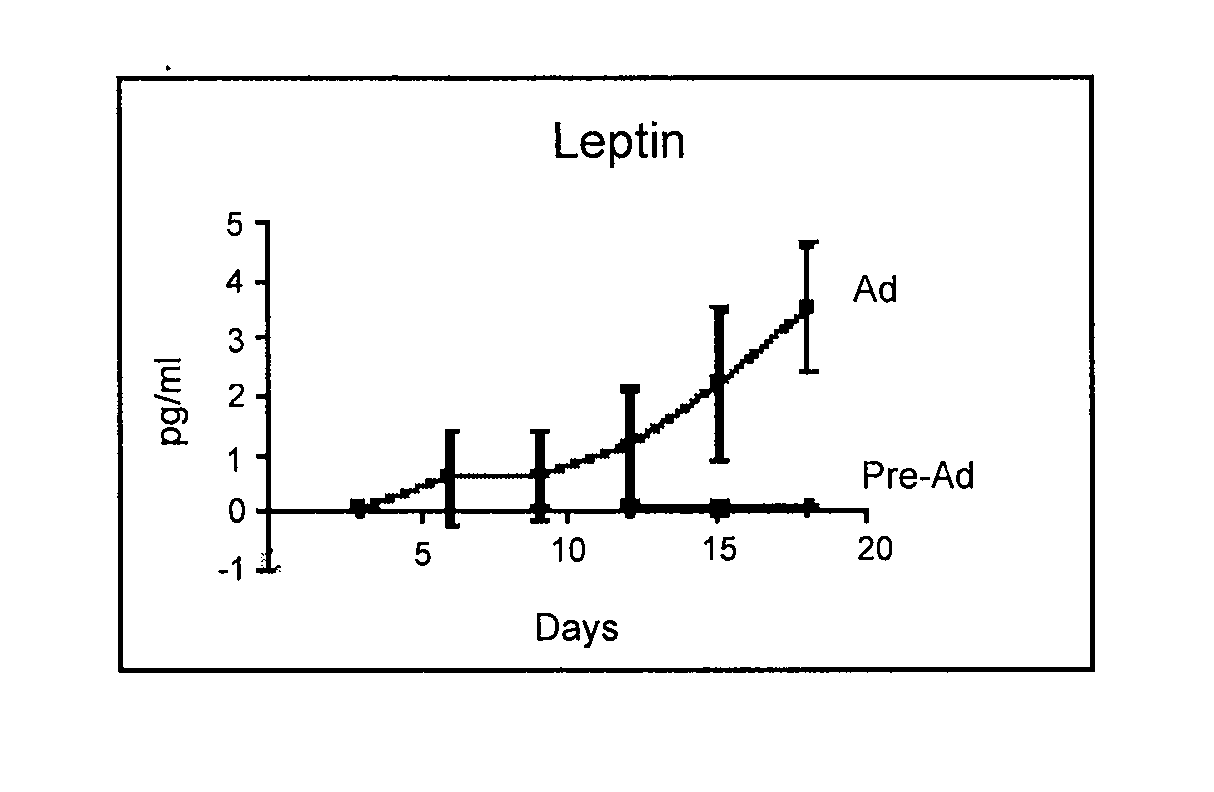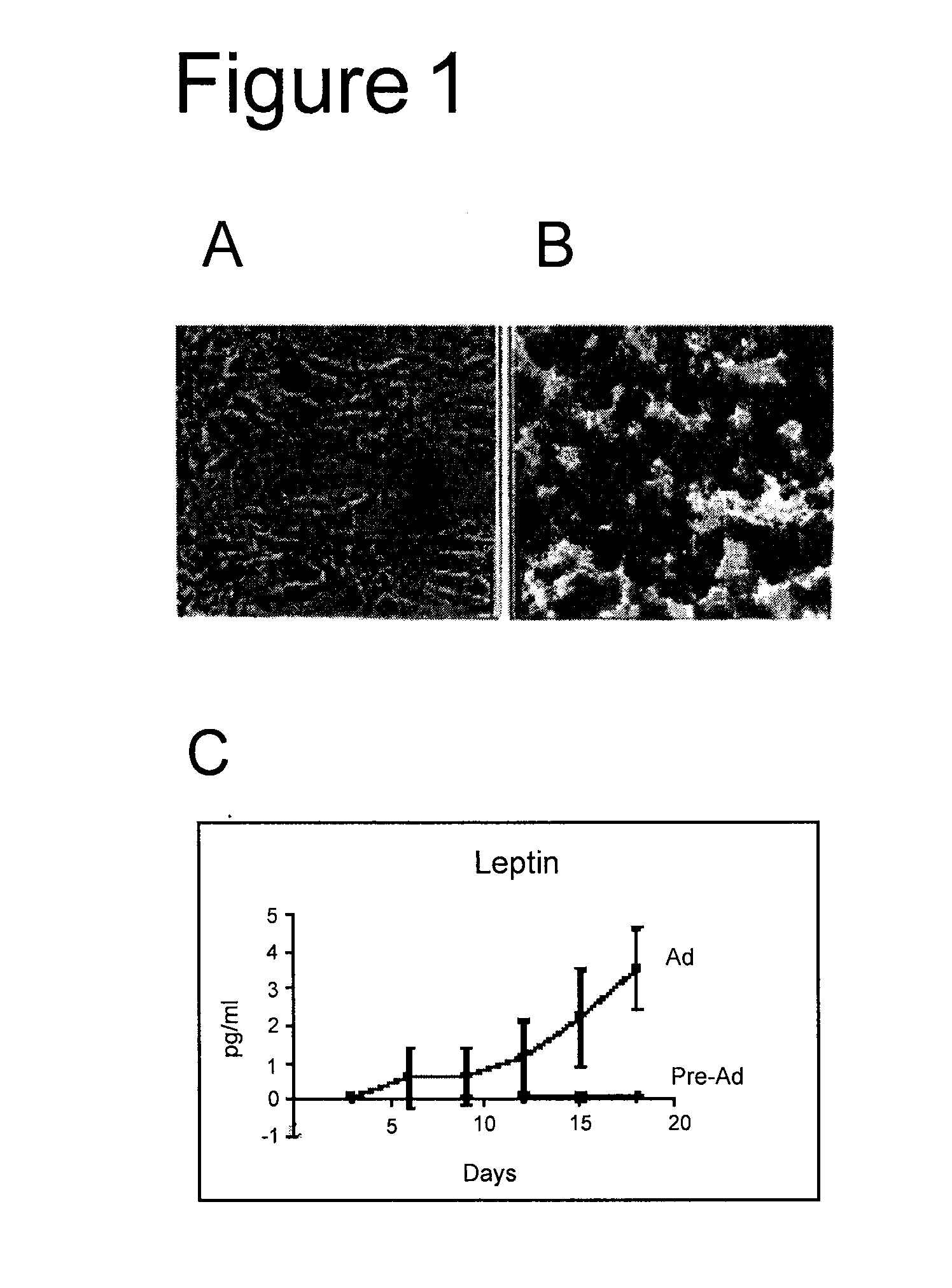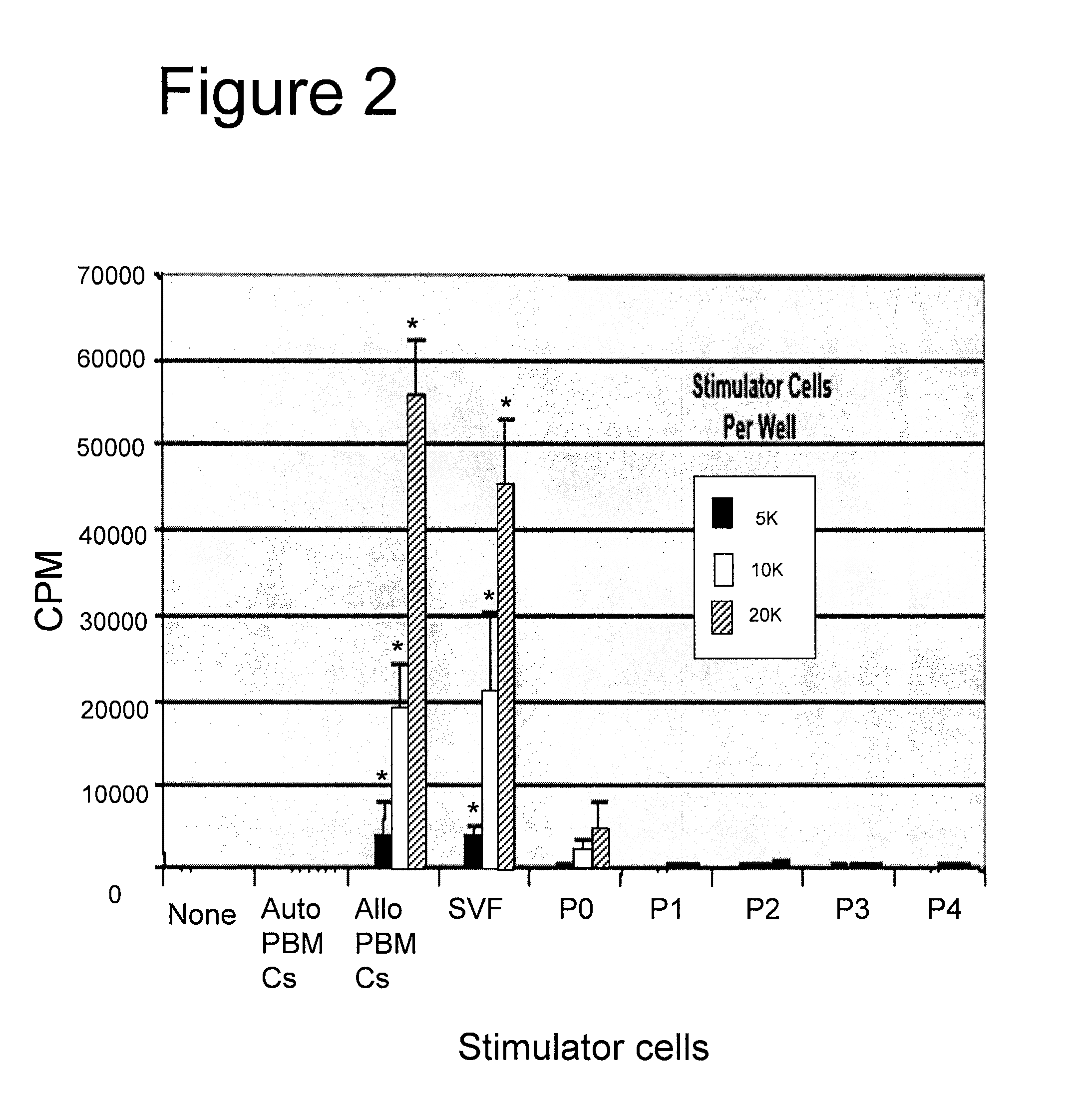Biocompatible scaffolds and adipose-derived stem cells
a technology of biocompatible scaffolds and stem cells, applied in the field of stem cells, can solve the problems of patient stem cells, ineffective treatment approach, and insufficient harvesting time for autologous approach
- Summary
- Abstract
- Description
- Claims
- Application Information
AI Technical Summary
Problems solved by technology
Method used
Image
Examples
experimental examples
[0120] The invention is further described in detail by reference to the following experimental examples. These examples are provided for purposes of illustration only, and are not intended to be limiting unless otherwise specified. Thus, the invention should in no way be construed as being limited to the following examples, but rather, should be construed to encompass any and all variations which become evident as a result of the teaching provided herein.
[0121] The materials and methods used in the experiments presented in the Experimental Examples below are now described.
example 1
Isolation and Charaterization of Adipose-Derived Stem Cells (ASCs)
[0122] Adipose-derived stem cells were isolated by subjecting a sample of adipose tissue from a human liposuction specimen to collagenase digestion, differential centrifugation and then expansion in culture as previously described (Aust et al., 2004, Cytotherapy 6:7-14; Halvorsen et al., 2001, Metabolism 50: 407-413; Sen et al., 2001, J Cell Biochem. 81: 312-319; Gimble et al., 2003, Cytotherapy 5:362-369). A single gram of tissue typically yields between 50,000 to 100,000 stromal cells within about 24 hours of culture using this method, and a mean of about 250,000 cells within 6 days of culture. Using this method, it is possible to produce in excess of 500 million cells within a 2 week period after a standard lipoaspirate.
[0123] Passage 2 (P2) ASCs thus isolated were characterized with respect to their cell surface markers and their differentiation potential. As shown in Table 1, the ASCs exhibited an immunophenoty...
example 2
Immunogenicity of SVFs and Passaged ASCs
[0129] Mixed lymphocyte reactions (MLR) were used to assess the immunoregulatory effects of human adipose derived cells in vitro on a T-cell mediated immune response. The proliferation of peripheral blood mononuclear cells (PBMLs) was measured based on tritiated thymidine incorporation in the presence of increasing doses of irradiated stimulator cells. Three criteria were used in assessing the immunogenicity of cell populations. These were: 1) a statistically significant difference in the T cell proliferative response (CPM) relative to that induced by autologous peripheral blood mononuclear Cells (PBMCs) (p<0.05, Student's t test); 2) a difference of at least 750 CPM from the response induced to autologous PBMCs; and 3) a stimulation index (SI; CPM induced by the test population divided by CPM induced by autologous PBMCs) of at least 3.0. Autologous and allogeneic PBMLs served as negative and positive stimulator cell controls, respectively.
[...
PUM
| Property | Measurement | Unit |
|---|---|---|
| Fraction | aaaaa | aaaaa |
| Pore size | aaaaa | aaaaa |
| Modulus | aaaaa | aaaaa |
Abstract
Description
Claims
Application Information
 Login to View More
Login to View More - R&D
- Intellectual Property
- Life Sciences
- Materials
- Tech Scout
- Unparalleled Data Quality
- Higher Quality Content
- 60% Fewer Hallucinations
Browse by: Latest US Patents, China's latest patents, Technical Efficacy Thesaurus, Application Domain, Technology Topic, Popular Technical Reports.
© 2025 PatSnap. All rights reserved.Legal|Privacy policy|Modern Slavery Act Transparency Statement|Sitemap|About US| Contact US: help@patsnap.com



